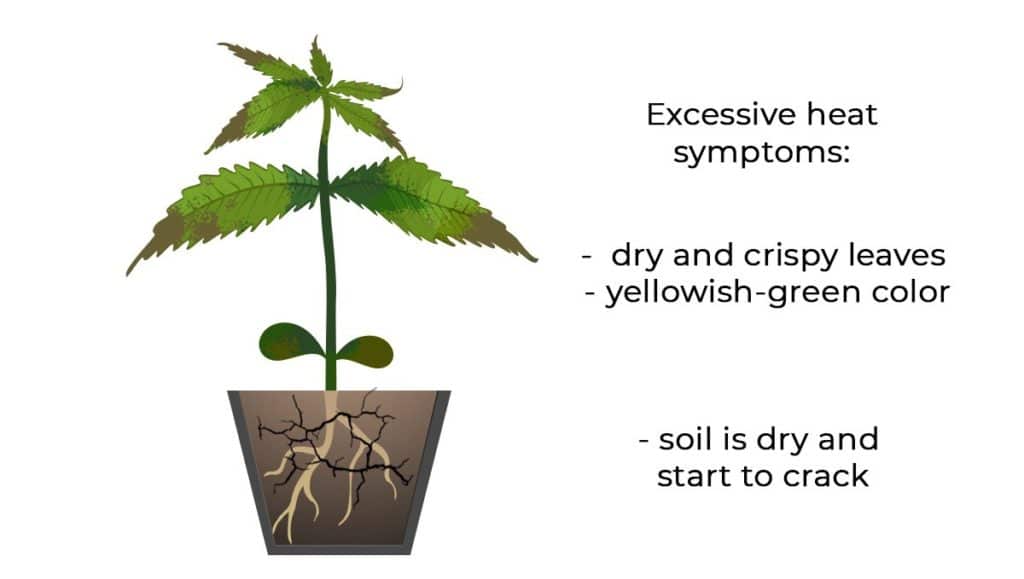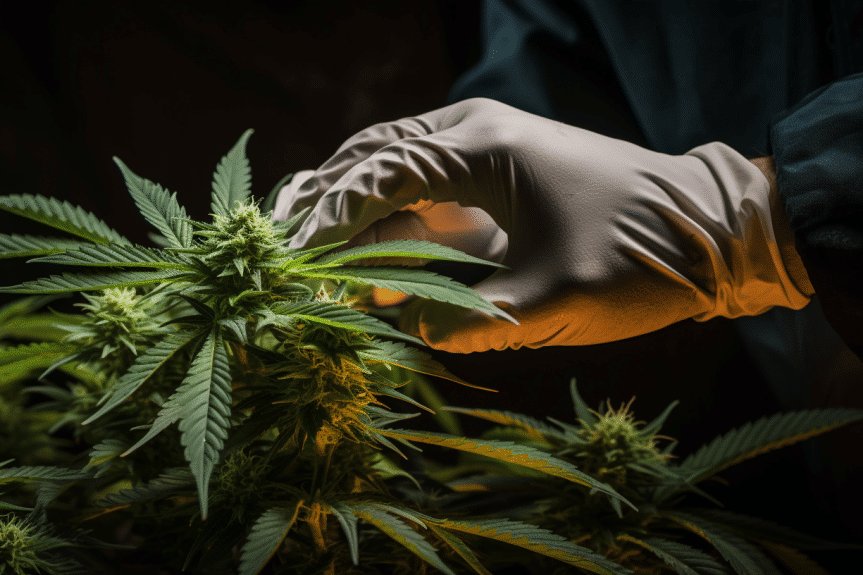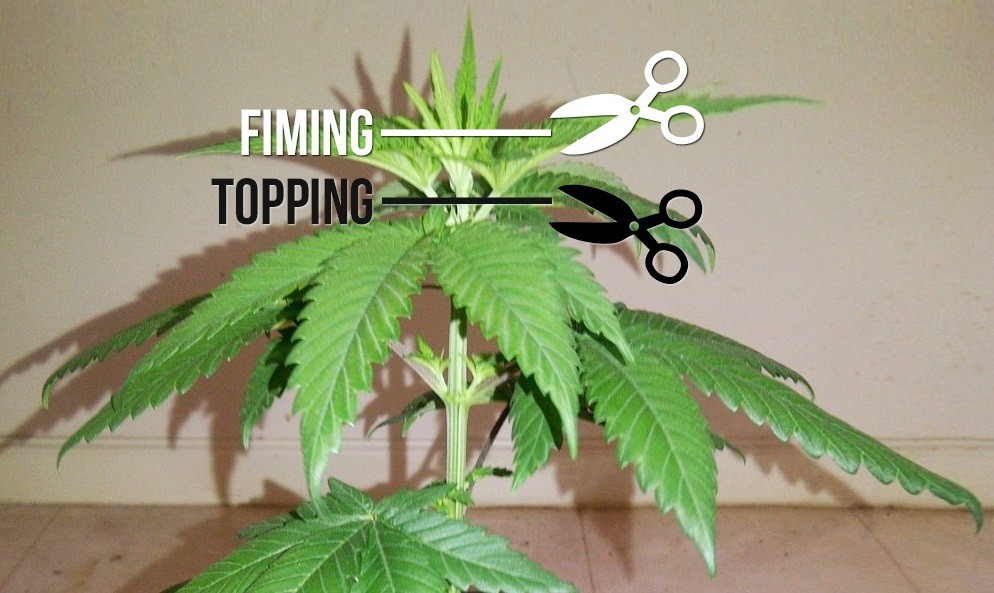No products in the cart.
Marijuana Education
Handling Cannabis Seedling Problems
Seedlings are most vulnerable within the first and second week after germination. This is because they have only just sprouted and their particularly susceptible to the harshness of the elements as well as pests and diseases. For a grower to have a successful growing season and a bountiful harvest at the end of it, he must be aware of the issues his seedlings could face and be knowledgeable enough to handle cannabis seedling problems.
By being proactive in handling budding problems, a grower protects his young plants from the damage his plants could sustain from the attack of pests and diseases while guaranteeing a return on investments made.
What are seedlings?
Seedlings are young plants grown from marijuana seeds. They are at the most vulnerable stage a plant could be in as they are extremely tender, incompletely developed, and cannot withstand normal natural occurrences like wind or even a strong breeze because of a lack of a root system.
Also because of its tenderness, the plants attract all kinds of pests and diseases which see the plants as easy pickings for a meal or destruction. Nonetheless, for the farmer, some steps can be taken to ensure that the seedlings are properly protected and have the freedom to grow to their full potential.
For invaluable knowledge on how to navigate the marijuana seedling stage, read on.
Recurring problems in the seedling stage and how to avoid them
Knowledge of the problems that plague the marijuana seedling is vital as only when the problem is known, can solutions be proffered. The following are some of the problems faced by marijuana seedlings.
Overwatering
Excessive watering of the seedling cause drowning as the oxygen supply of the plant is restricted. Most growers don’t realize how easily a seedling that has been planted in a big container can be overwatered. To counter this problem, it is recommended that the grower plants seedlings in smaller containers so that the water level is more easily ascertained. Some signs of overwatering are as follows;
- Downward-curling leaves
- Sagging or drooping plants
- Dropping of leaves
- Yellow leaf tips
- Stunting of plant growth
Since seedlings take in less water than grown plants, when the soil is saturated with water by the grower, it takes longer to evaporate.
A precautionary step to avoid overwatering is for the grower to water a little area at the base of the seedling and wait till the soil absorbs the water to a depth of about one inch before more water is applied.
Sometimes, overwatering occurs due to the lack of a proper and effective drainage system. The grower should ensure that his soil of choice drains easily and there are adequate drainage holes. Where there is an effective drainage system in place, overwatering is more easily avoided.
Another method is by adding perlite to the soil which acts to increase oxygen availability in the soil and encourage soil drainage. With these steps, a grower can worry less about overwatering in his seedlings begin to grow into maturity.
Under-watering
In seedlings under-watering, your plant is as dangerous as overwatering it. It is necessary that marijuana seedlings get sufficient – not more or less – the amount of water for their proper growth and development daily. This is because plants lose a certain amount of the water used in watering them daily in a process known as transpiration.
Transpiration is a respiratory process for plants. However, while water is a necessity for the health and well-being of seedlings, it is only needed in small amounts for metabolism and growth. To this end, excess water is let go through evaporation through the leaves, stems, and flowers. Evaporation through the leaves is carried out through the stomata which can also act as a water receptacle when open.
Identifying under-watering may be challenging considering that some of its signs are similar to those of overwatering. Nonetheless, a grower should watch out for these signs;
- Drooping of leaves
- Seemingly lifeless plants
- Thin and papery leaves
- Yellow leaves
- Extremely dry soil
Where the grower has trouble differentiating between the signs of overwatering and under-watering, the plants should be watched as they usually become fresher after watering if under-watering is the problem.
Watching for overwatering or under-watering signs are even more important in auto flower strains as they are more easily stressed and their yield easily affected.
While there is no specific schedule to be stuck to for the watering of seedlings, the grower should endeavor to monitor seedling and soil appearances and moisture levels as frequently as every morning.
Nutrient defects
Nutrient defects are a prime problem of marijuana seedlings. These problems range from the excessive availability of some nutrients, lack of some of the nutrients, and mixture or usage of the wrong types of nutrients. The importance of having the knowledge and experience to recognize the nutrients required by the seedlings and in what quantity cannot be overemphasized as such knowledge is required for proper protection of the seedlings.
When plant seedlings or even the matured plants do not receive the nutrients required for their proper growth and development, it can result in the plants going into shock which will prevent the plant from reaching their maximum potential. Some of the symptoms of nutrients defects include the following;
- Yellowing of leaves
- Brown or burn spot on the leaves tips
- Curling of leaves
- Stunted planted growth
- Clawing of leaves
As a heads up, it should be noted that nitrogen defect is a frequent nutrient deficiency in marijuana due to its importance through the life cycle of the plant irrespective of what strain is being grown.
Nutrient toxicity
Nutrient toxicity which comes about as a result of too much of a certain type of nutrient in the soil is made evident in the plant through the following signs:
- Deeper green leaves in the plant
- Yellowing leaves
- Downward curling leaves
- Purplish branches and stalks
- Slowly dying leaves
Where the wrong nutrient is used, the symptoms of nutrient toxicity also become apparent and can cause cannabis seedling problems. While still seedlings, it is recommended that the grower uses fewer nutrients to only meet the requirements for the plants so as not to surpass the needed quantity and cause nutrient toxicity.
Where the grower observes the signs caused by nutrient toxicity, he could flush excess nutrients out of the soil after which the plants will adjust to the available nutrients and thrive.
Excessive heat
While marijuana plants need warmth, excessive heat becomes detrimental to the health and wellbeing of the seedlings. For seedlings to grow properly and flourish, the recommended temperature should be kept within 70-77°F. Once the temperature exceeds this limit, it results in heat shock which causes the plant leaves to resemble boats or tacos. The plants also shouldn’t be placed too close to the lights to avoid burns.
Lighting problems
It is trite knowledge that plants need light for their growth and development without which the plant won’t attain its full growth potential because it can’t photosynthesize. However, too much light like too much of every other nutrient is detrimental as plants also need the dark phase to develop properly. Where there is too much or too little light, the following signs may become evident;
- Burnt leaves
- Large gaps within nodes
- Unhealthy plants
Unlike nutritional issues, it is quite easy to correct problems caused by light. Where the problem is caused by the light being too close to the plant, the light can be adjusted away from the plant to aid proper growth and development. Where the lights are too far off, they can be adjusted closer to the plants so that the plants can make the most of the light.
Creating the perfect environment to reduce cannabis seedling problems
Seedlings being baby plants need a lot of protection and grooming to grow properly and attain maximum potential in growth and yield and to avoid defects and growth problems. Most strains of marijuana have seedling phases that last within 2 and 3 weeks.
Within this time, the grower needs to frequently observe the conditions in which the plants are growing to ensure there are no apparent signs of growth issues. This is usually easy as all that seedlings require is a proper balance between light, warmth, and moisture.
For best results and proper monitoring, the seedlings are germinated indoors. Where this is unattainable, the grower should consider using clones are these are usually more resistant to pests and diseases.
Conclusion
The effort expended in caring for seedlings is always worth it and pays the grower back in a bountiful harvest. Where there is no care, the grower stands the risk of losing the investment made on seeds in the first place.
The care inputted in the seedling stage sets the proper foundation for the plant through the vegetative and flowering phases because as soon as the plant begins to grow rapidly, the grower will be pleased with the effort put in grooming the seedlings in the seedling phase as the plants begin to grow stronger and bigger whereas they will be sickly where care was not given.
Checking on the seedlings daily could be the difference between a whole lot of defects and healthy plants. Hopefully our article was able to cover how to handle cannabis seedling problems.






